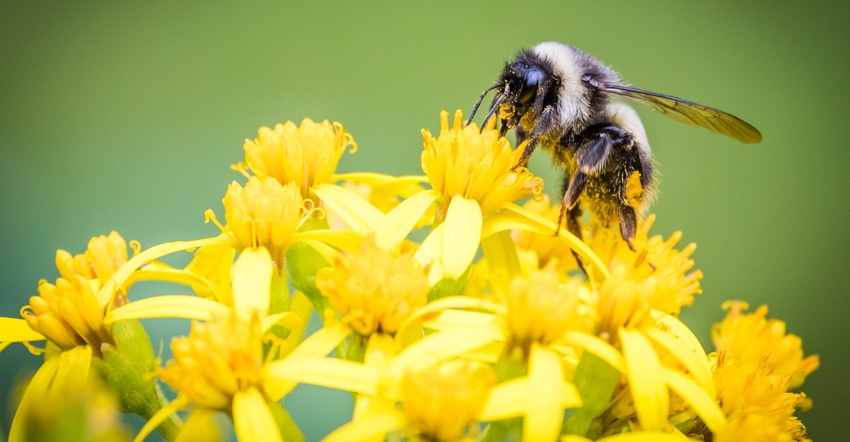April 18, 2019

Tom Turpin, a Kansas farm boy, didn’t set out to become an entomologist. But he became a legend in his own right in Indiana, racing cockroaches and cooking mealworms for local celebrities. He traveled the state giving speeches with a chicken perched on his shoulder.
He assures me Henrietta the hen is still around. “We’re on Henrietta the 23rd,” Turpin quips.
With cracks like that, it’s not surprising he took a liking to poems by James Whitcomb Riley. The Greenfield, Ind., icon passed away in 1916, over a hundred years ago, but his poems live on. He’s become part of Hoosier folklore, especially among rural Hoosiers. Phrases like “when the frost is on the pumpkin and the fodder is in the shock” captured the spirit of rural Indiana that lives to this day, even though few farmers grow pumpkins and even fewer put corn in shocks.
Insect fascination
What captured Turpin�’s interest, he says, is how many of Riley’s poems include insects. Turpin says there are dozens of poems where insects make an appearance.
One of Turpin’s favorites is “The Bumblebee.”
“You better not fool with a bumblebee! —
“Ef you don’t think they can sting — you’ll see!” begins the poem.
Here’s the part that captivates Turpin:
“An’ I ist grabbed it — an’ nen let go —
“An’ ‘Ooh-ooh! Honey! I told ye so!’
“Says The Raggedy Man; an’ he ist run
“An’ pullt out the stinger, an’ don’t laugh none,”
Each time he recites the poem, Turpin asks the audience, “Did anyone catch the error?”
Someone usually catches it — it’s basic bee physiology.
Yes, bumblebees sting. “But only one bee leaves the stinger in your hand, and it isn’t a bumblebee,” Turpin explains. “Now, if you get stung by a honeybee, you could have a stinger in your hand. That’s also why a honeybee dies after stinging. Leaving part of her anatomy behind causes her to die.”
It’s always a “her” Turpin says, and that’s the same for bumblebees. The female does the stinging. But in the bumblebee’s case, she doesn’t leave the stinger behind.
“Have you ever caught a bumblebee in your hand?” Turpin continues. “I have, and I haven’t been stung doing it.”
Now, come on, Tom. “It’s true, and you can do it if you understand the anatomy and physiology of bees,” he says.
Male and female bumblebees differ in three major ways, according to various references. But Turpin says there’s a fourth difference: They have different sets to their eyes. One is much closer together than the other. If you know which is which, and you know that males don�’t sting, you can grab a male bumblebee in your hand, amaze your friends and never get stung.
Now here’s the kicker. Even though Turpin told the audience when I listened to his talk, I don’t remember which is which. Is it the male with eyes set wide apart, or the female? Like James Whitcomb Riley, I wouldn’t make a good entomologist, except I’m not a poet either.
I’m also not totally crazy. I’ll let Turpin grab bumblebees if he wants — I’ll just watch from afar!
Comments? Email [email protected].
You May Also Like




